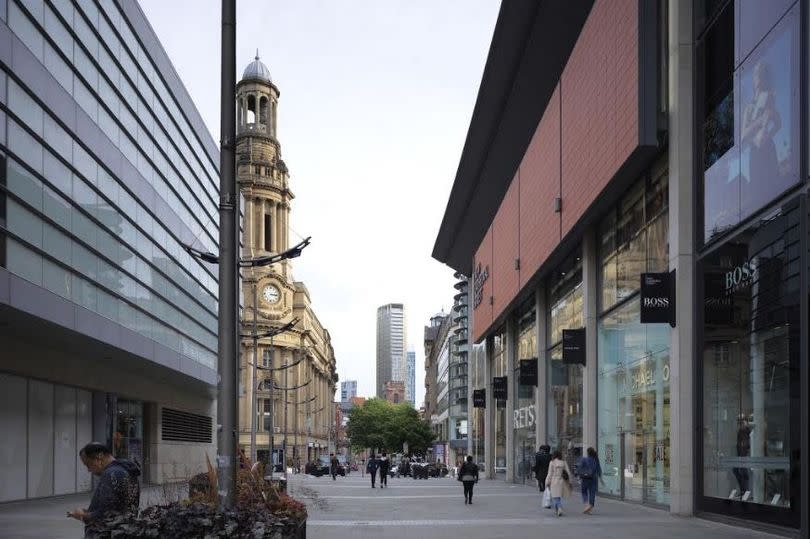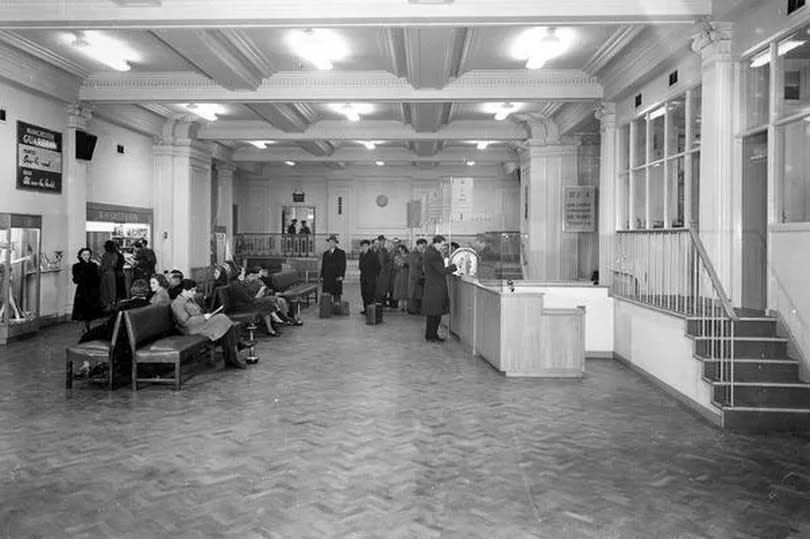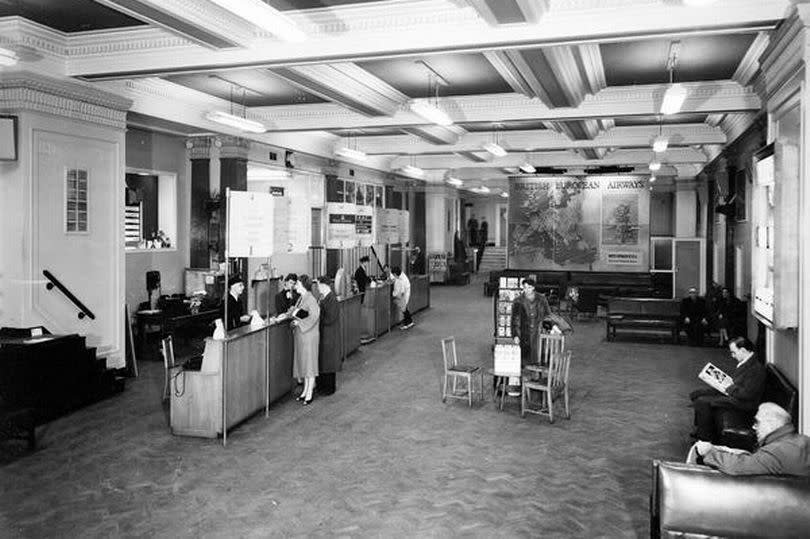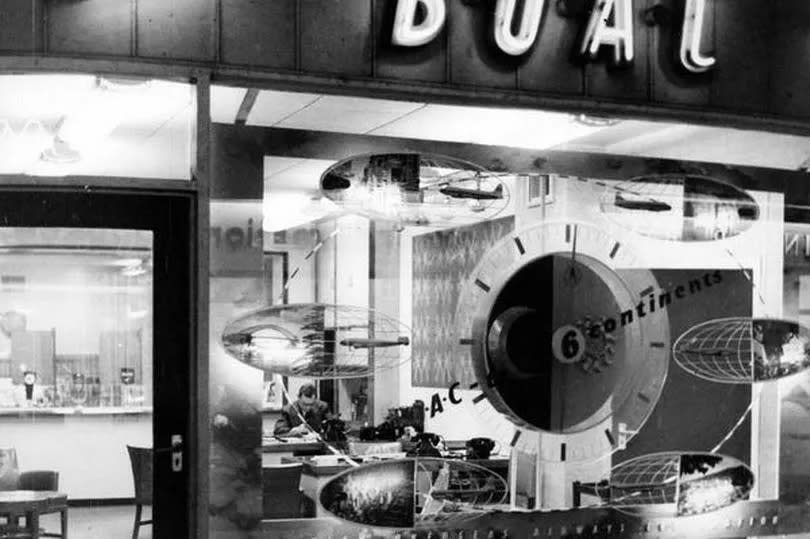Manchester Airport terminal lets you check-in for flights in the city centre

The iconic Royal Exchange building, nestled in the heart of Manchester city centre, boasts a rich and varied history that stretches back to the 18th century. Initially serving as a trading hub for raw cotton across the old county of Lancashire, the building has seen numerous transformations over the years.
Today, the intricate arches of The Royal Exchange house a variety of outlet stores, including luxury shops and retail units. So it's somewhat surprising to learn that this majestic Georgian building once functioned as a bustling airport terminal during the 1950s.
From 1951 onwards, the Cross Street entrance to the building was utilised as the Manchester Air Terminal. Here, passengers would check-in for their flights before hopping on a bus destined for Manchester Airport.
READ MORE: "It wouldn't be allowed these days": Greater Manchester's last pop men
Read today's top Manchester Evening News stories
Previously located at St Peter's Square, the Manchester Air Terminal had to relocate across town when its contract ended. Airline companies, such as Air France, advertised in the Manchester Evening News, inviting customers to their St Peter's Square terminus.
Several city centre locations were considered as potential replacements for the new Manchester terminus, with one suggestion being the old Athenaeum Club on Princess Street. Constructed in 1837, the Manchester Athenaeum building originally housed the Manchester Athenaeum Club for the Advancement and Diffusion of Knowledge.

Within just a year, the club boasted over 1,000 paying members and was renowned enough to host talks from Charles Dickens and Benjamin Disraeli during the 1840s. Manchester Corporation took over the building in 1938, when the society ceased operations.
Try MEN Premium for FREE by clicking here for no ads, fun puzzles and brilliant new features.
In 1945, the Manchester Art Galleries Corporation leased the building to Food Ministry staff who were still occupying the building by 1952. A Manchester Evening News article from May of that year reported that a decision was pending from the Manchester Art Galleries Corporation about whether the air terminal would be relocated there.

However, they evidently decided against it as the building went on to become an extension of Manchester Art Gallery, a role it continues to fulfil today. Manchester Airport, originally known as Ringway, opened its doors in 1938, following Barton and Wythenshawe aerodromes.
Join our WhatsApp Top Stories and, Breaking News group by clicking this link
However, World War II broke out just months after its opening, delaying the return of mass passenger transport until 1946. Given the rarity of cars at the time, and with the airport still under development, having a terminal in a central location like St Peter's Square was a logical choice.
By November 1951, plans were underway to move the city centre terminal to The Royal Exchange, taking over a unit that had previously housed the old Manchester Limited Restaurant on Cross Street. That same month, eight major foreign and British airlines, including British European Airways, Air France, Trans-Canada Airlines, and Swiss Air, convened to discuss the specifications for the new terminus, consulting with architects on how the unit could be appropriately transformed.

It was revealed that the annual rent would be around £8,500, equivalent to over £270,000 in today's money. An agreement was finalised in December when it was decided that the new air terminal would operate from the Cross Street unit, extending from the street to St Ann's Square.
Join our Greater Manchester history, memories and people Facebook group here.
The Royal Exchange terminal was set to include nine lines, making it the largest outside of London at the time. A £50,000 conversion of the unit began in December 1951, with plans to introduce a bar, restaurant, and waiting room at the new terminal, aiming for completion by the summer of 1952.

Passengers could check in for their flights at desks here before boarding two-tone blue shuttle buses which would depart from St Ann's Square for the ten-mile journey to Ringway. The design of these Leyland Royal Tiger buses included a large luggage compartment under the rear seat.
Love Greater Manchester's past? Sign up to our new nostalgia newsletter and never miss a thing.
They had no stops - and, excitingly, displayed the names of passengers' final destinations, meaning that alongside buses going to local suburbs, there were vehicles 'heading' for international destinations like Dublin, Madrid, New York and Zurich.

In 1954, the terminal was expanded with a brand-new restaurant, commissioned by BEA. This was indicative of the terminal's bustling traffic, as an increasing number of travellers used Manchester Airport.
The Royal Exchange air terminal was decommissioned around 1962, coinciding with the inauguration of Terminal One at Manchester Airport by His Royal Highness, Prince Phillip, the Duke of Edinburgh. The bus service operating from the city centre to the airport continued for a while after this, serving as a precursor to the city centre shuttle service, which was eventually superseded by rail in 1993.
Does this story awaken any memories for you? Let us know in the comments section below.

 Yahoo News
Yahoo News 
